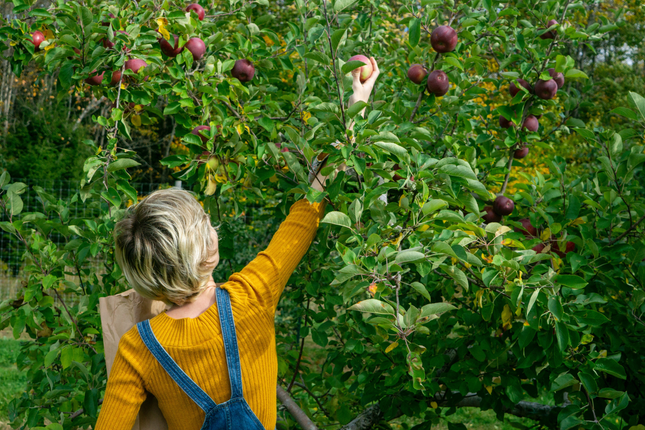We bet that at least half of our readers watched the compelling Bush Tucker Man back in 1988. In this ABC-TV program, Major Les Hiddins traversed northern Australia to seek out edible plants. Hiddins might have been the first we heard of what is a long tradition of gleaners and foragers, from our indigenous Australians to mediaeval France to the present-day urban foragers.
Did you know that you can forage all over the world? (You could glean but these tend to be local organised groups.) There are even maps that show locations and descriptions of what to pick and when. If you’re a grey nomad and full of curiosity, urban foraging could be a fun way to supplement your food budget or at least focus your stays.
Ancient gleaning
While dumpster diving is a relatively new phenomenon, the practices of foraging and gleaning trace their origins back to – in France, at least – 1554. French law from that year permitted women, children, the old, sick, and destitute to gather what was left in the fields after the harvest (and before the farm animals were let loose to graze). The same activity occurred in England; in both countries, gleaning was allowed during daylight hours only, often with a bell signalling the start and end of the gleaning period.
Read more about early gleaners and the relationship with art of the time or learn about the award-winning film, ‘The Gleaners and I’. The film is hard to find; we found a copy in our local library so check there first.
Modern-day gleaning
What might be surprising (at least, it was to us) is gleaning has moved into the 21st century although these days a ringing bell to signify the start of gleaning is now more likely to be a post in a Facebook group. Gleaners are not there primarily to provide food for their families but are more altruistic, abhorring food waste and sending the produce they gather to charities that feed the less fortunate. However, modern-day gleaning, especially in some countries, is far more complicated than it was in the 16th century.
From The Economist, 22 Dec 2018: ‘The America Gives More Act of 2015 allows a permanent deduction for farm businesses that welcome gleans of up to 15% of taxable income. But legal caveats about trespass and damage can be fierce, and laws covering gleaning vary greatly from state to state: the east and west coasts broadly welcoming, the heartland much less so.’
As most Australians live in cities, we don’t have the option of wandering paddocks or orchards to glean the leftover grain or fruit. There are few organised gleaning groups to join; however, if you feel inclined and live in a regional area, you can always talk to your local farmer. Beware that you will need to cover many issues to get a new group off the ground (or onto the ground).
Bush Tucker Man: forager
When our TV bush tucker man Major Hiddins, who had served in Vietnam, was asked by the Australia Defence Force to list edible plants, as per the organisation’s request, he focused on northern Australia; specifically, Far North Queensland. Originally a survivalist study, Les became fascinated with the history of the places he visited and entranced many of us who were getting a taste for outback Australia. Since then, Les has travelled across our wide brown land, learning from Indigenous elders. If you want to know what you can eat and use in any location from coast to arid zone, you can now search the bush tucker database or head to bushtuckerman.com.au.
Urban foraging
Rather than gleaning that becomes complex, we can participate in ‘urban foraging’. What is it? Urban foragers pick, prepare and eat food that they find hanging over walls and fences or growing in public spaces. Urban foraging is a growing movement and one you can tap into easily wherever you are on your travels. Check out Fallingfruit.org that shows not only thousands of locations in Australia but also foraging spots all over the world.
Bush discovery tours
Whether you’re experimenting with bush tucker on your travels around Australia to urban foraging, we hope this article helps you to learn more about our environment. To get you started, see if your local council holds bush discovery tours or search for bush food discovery tours in your area. You’ll find some bush food tour options here.
Want to learn more about making the most of your next 30 years?
We’re committed to making life better for the over 55s. Check out downsizing.com.au for more insights and great advice on living life to the fullest.


